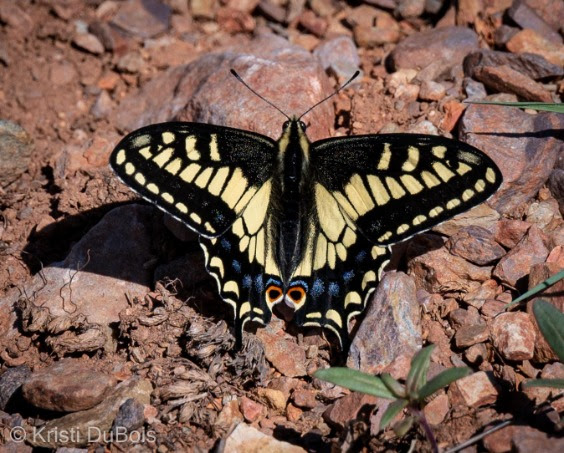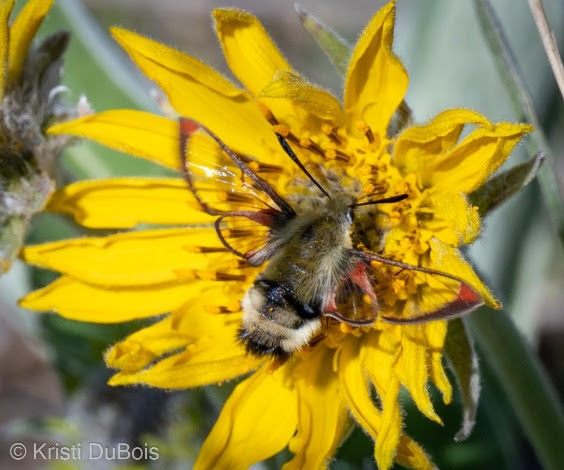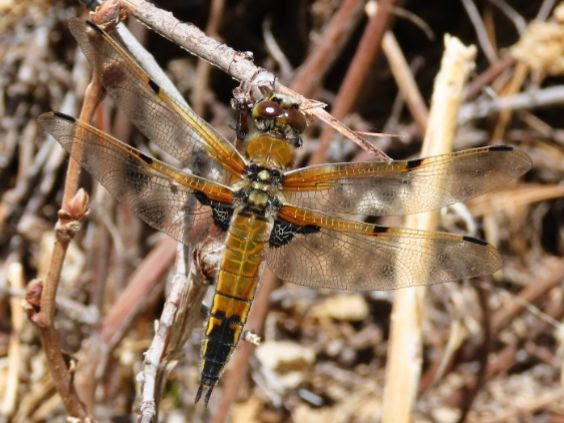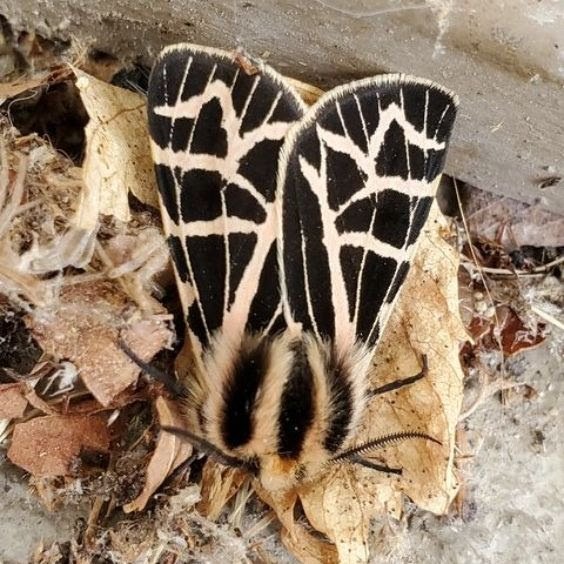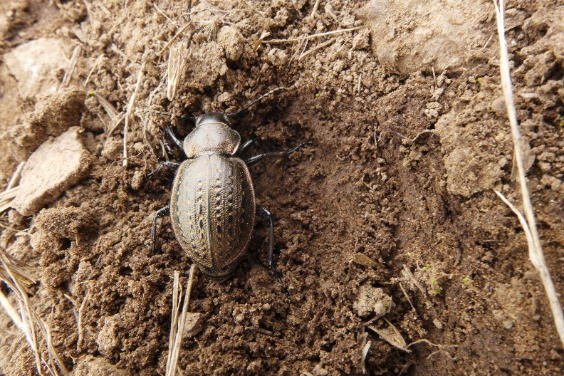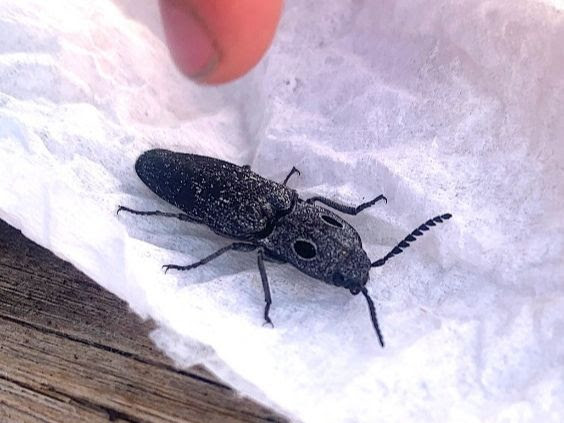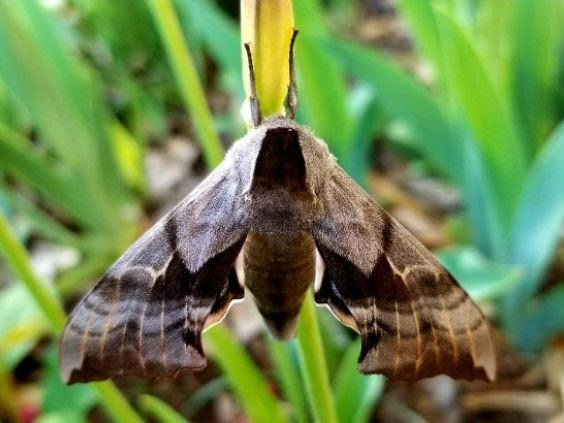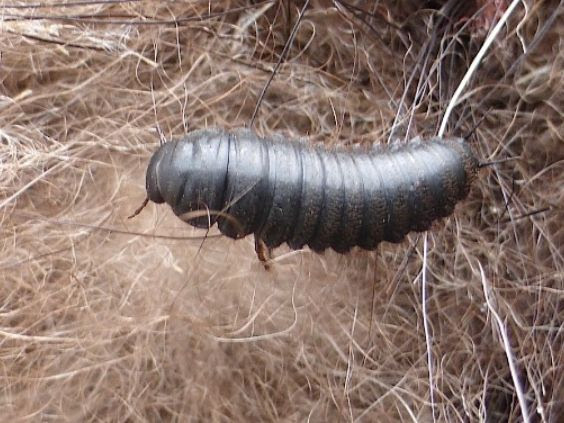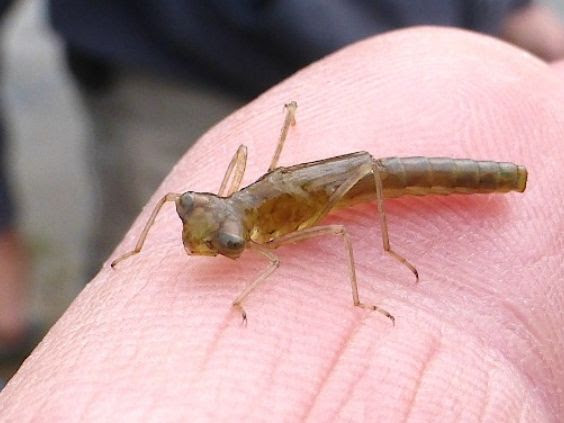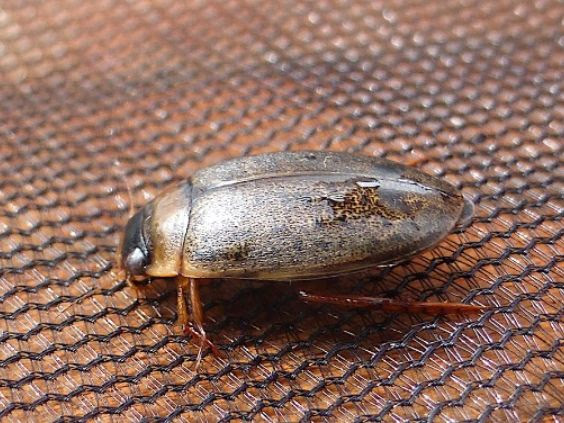These are some of the first swallowtails we see in the spring, flying from late April to July among bare hills, mountains, gardens, fields, vacant lots, and roadsides. They are […]
Read MoreWhat’s Buzzin’
What can you see around Western Montana right now?
Thetis Clearwing Moth or Rocky Mountain Clearwing Moth (Hemaris thetis)
These beautiful day-active moths can certainly make you think you are seeing a bumblebee or even a small hummingbird. They typically hover above flowers while feeding, much like a hummingbird. […]
Read MoreFour-spotted Skimmer (Libellula quadrimaculata)
Four-spotted Skimmers are one of the earlier dragonflies on the scene. They are quite large, at up to two inches long, and have a diagnostic black spot halfway along each […]
Read MoreOrnate Tiger Moth (Apantesis ornata)
This striking moth is typically found in the Northern Rocky Mountain states and Pacific Northwest in moist forest and grassland habitats. The larvae are generalists, feeding on a wide variety […]
Read MoreGranulated Carabid (Carabus granulatus)
These ground beetles, whose wing covers look as if they’ve been painstakingly sculptured, are introduced from Europe and are typically seen in our area in April and May. Peter noted […]
Read MoreWestern Eyed Click Beetle (Alaus melanops)
These large beetles (with noticeable eyespots) inhabit coniferous forests and are typically found from June through July. Their larvae live in dead or dying trees and feed on the larvae of woodborers […]
Read MoreOne-eyed Sphinx (Smerinthus cerisyi)
With a wingspan of up to 3.5 inches, these moths are impressive in both appearance and size. They can be found coast to coast in the northern United States, plus […]
Read MoreCarrion Beetle Larva (likely Thanatophilus lapponicus)
Glenn offered his bug guiding services as an item for the Five Valleys Land Trusts’ annual auction. Accompanied by about 13 kids and six adults, they discovered plenty of bugs, […]
Read MoreDamselfly Nymph (Suborder Zygoptera)
Before taking to the sky, damselflies, and their close relatives the dragonflies, develop in still water such as ponds, lakes, marshes, and bogs. The nymphs are predatory like their adult […]
Read MorePredaceous Diving Beetle (Rhantus consimilis)
As their name suggests, predaceous diving beetles are capable predators both in their larval and adult stages, feeding on aquatic invertebrates like mosquito larvae; with larger species dispatching small vertebrates […]
Read More